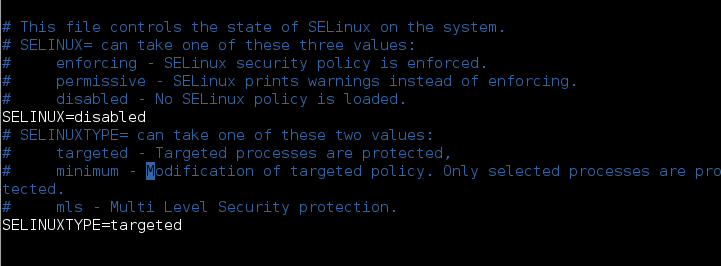The first thing to do is to check the status of SELinux on your system, and you can do this by running the following command:
Next, proceed to disabling SELinux on your system, this can be done temporarily or permanently depending on what you want to achieve.
Disable SELinux Temporarily
To disable SELinux temporarily, issue the command below as root:
Alternatively, you can use the
setenforce tool as follows:
Else, use the Permissive option instead of 0 as below:
These methods above will only work until the next reboot, therefore to disable SELinux permanently, move to the next section.
Disable SELinux Permanently
To permanently disable SELinux, use your favorite text editor to open the file
/etc/sysconfig/selinux as follows:
Then change the directive
SELinux=enforcing to SELinux=disabled as shown in the below image.
Then, save and exit the file, for the changes to take effect, you need to reboot your system and then check the status of SELinux using sestatus command as shown:




No hay comentarios:
Publicar un comentario